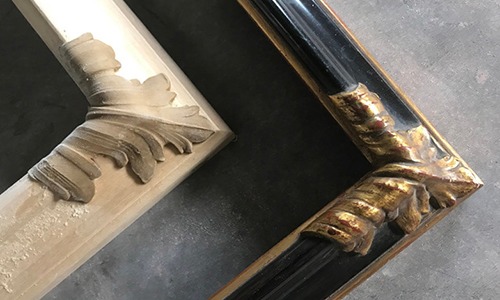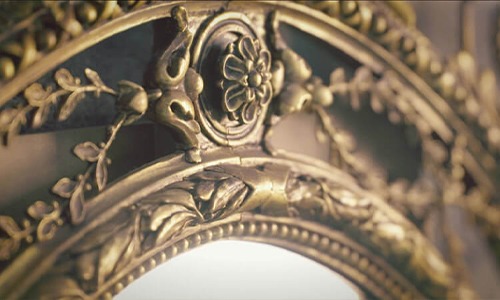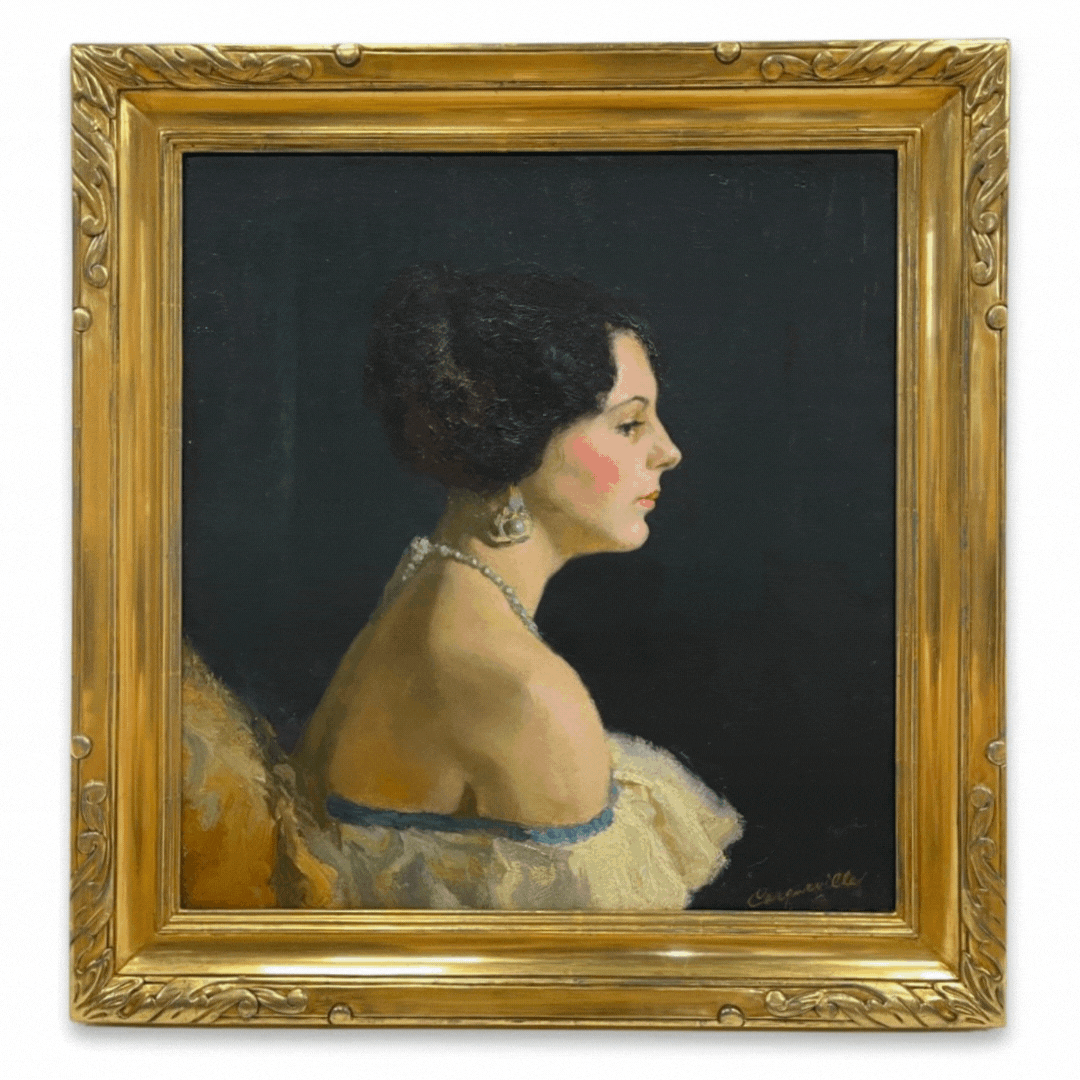
The creation of a custom gilded frame for an heirloom portrait
A Portrait by William Carqueville
This beautiful portrait from the early 1930s was painted by Chicago artist, William Carqueville (1871-1946). He studied at the Art Institute of Chicago and briefly in Paris. While he is known for his realistic paintings, he is most recognized for his lithographic illustrations. His work was published in literary magazines such as Lippencotts, International, Harper’s, Scribner’s, etc.
This portrait of an anonymous sitter. The painting is oil on board and is signed at the lower right corner. The contrast of the blue background highlights the sitter’s beautiful complexion.
The Making of the Frame
We wanted to design a frame that not only complimented the painting, but also wanted it to look like it was made at the same time as the portrait. The portrait commanded an elegant frame, but, nothing too ornate. We opted for an American Impressionist frame design that honored the time period. The hand carved design on the corners added just enough detail, without overpowering the painting.
It Starts with a Raw Wood Profile
The raw wood profile was milled, cut into four custom lengths, and then joined at our studio. Once joined, the design was scaled and hand drawn in graphite at each corner. The design was then carved by hand. The profile was sanded smooth to prepare for the next step.

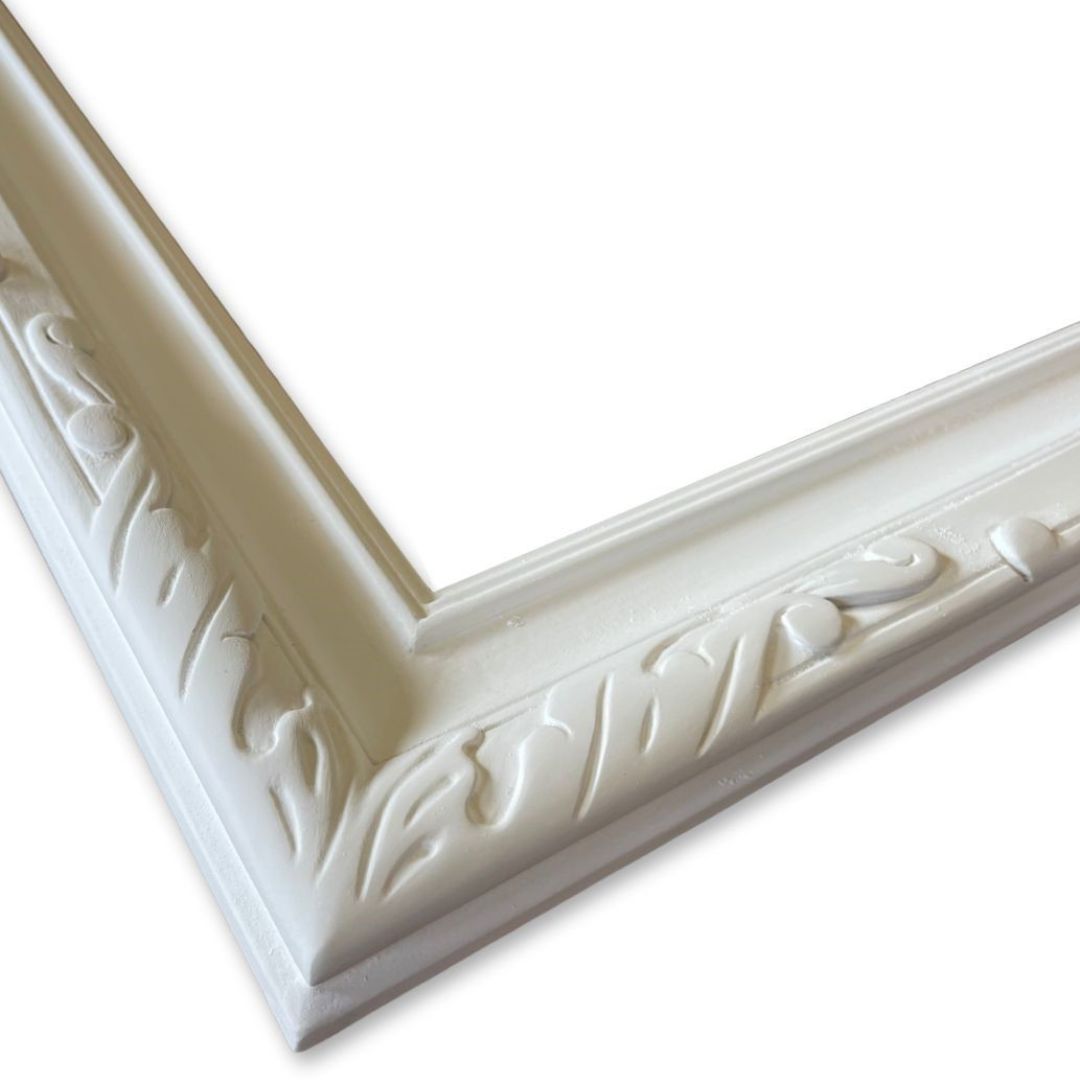
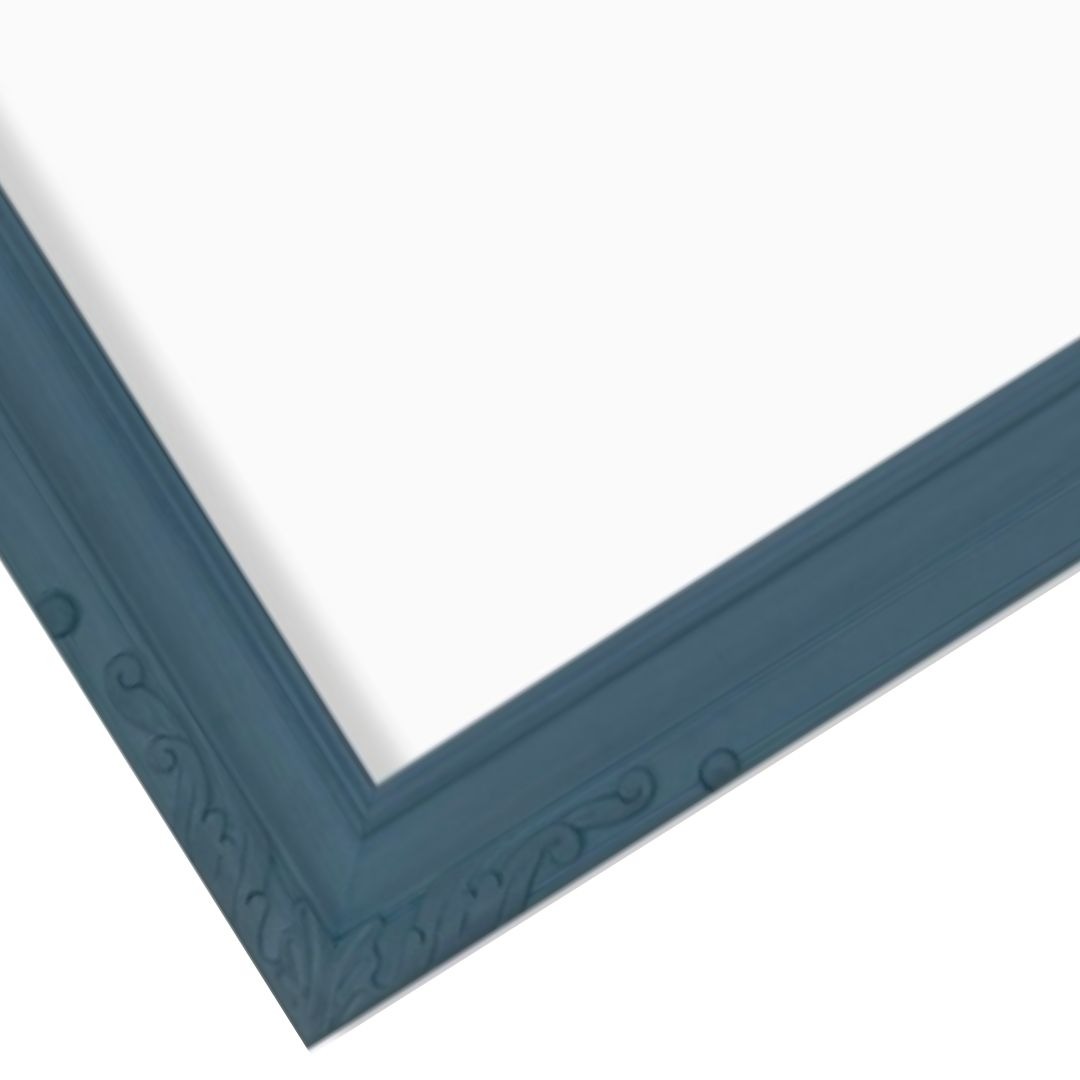
Application of Gesso
Once the surface was prepared, it was time for the application of gesso. We make our gesso using a traditional recipe, which is made with a combination of rabbit skin glue and calcium carbonate. The gesso is applied in multiple layers, with each layer indivually dried and sanded between coats. Sepcial care and attention is paid to ensure that each layer is sanded properly to ensure that there are no issues with the surface futher in the gilding process.
Applicate of Clay Bole
Once the gesso layers have been successfully applied and properly sanded, layers of clay bole are then applied to the prepared surface. As with the gesso, the clay bole is applied in multiple layers, with each layer individually dried and sanded between coats. A custom blue was mixed for this frame to subtly compliment the blue tones present within the portrait painting. It is important that the bole layer is sanded to a silky smooth surface to ensure the perfection of the gold leaf that will be soon applied to the frame.
Water Gilding-The Application of Gold Leaf
Now that the profile is prepared with gesso and bole, the frame is ready to be water gilded. Using a time-honored, centuries old technique, leaves of authentic gold leaf are hand applied with a gilder’s tip and an electrostatic charge. Each 3 1/8″ x 3 1/8″ sheet of gold leaf is indivually applied, and even layered as needed to provide more opacity to the surface. Once the gold has been applied, the surface is selectively burnished with an agate to acheive a high, reflective sheen. Areas of the frame are then rubbed and abraded to reveal the areas of bole underneath. The revealed areas of bole can emulate historic wear, but also can be used as a design element. In this case, it is both, it softens the appearance of the gold, and the blue in the portrait, is now reflected in the frame. The gilded and rubbed surface was then lightly toned to give more of a presence of age and then sealed with a protective coat of shellac.

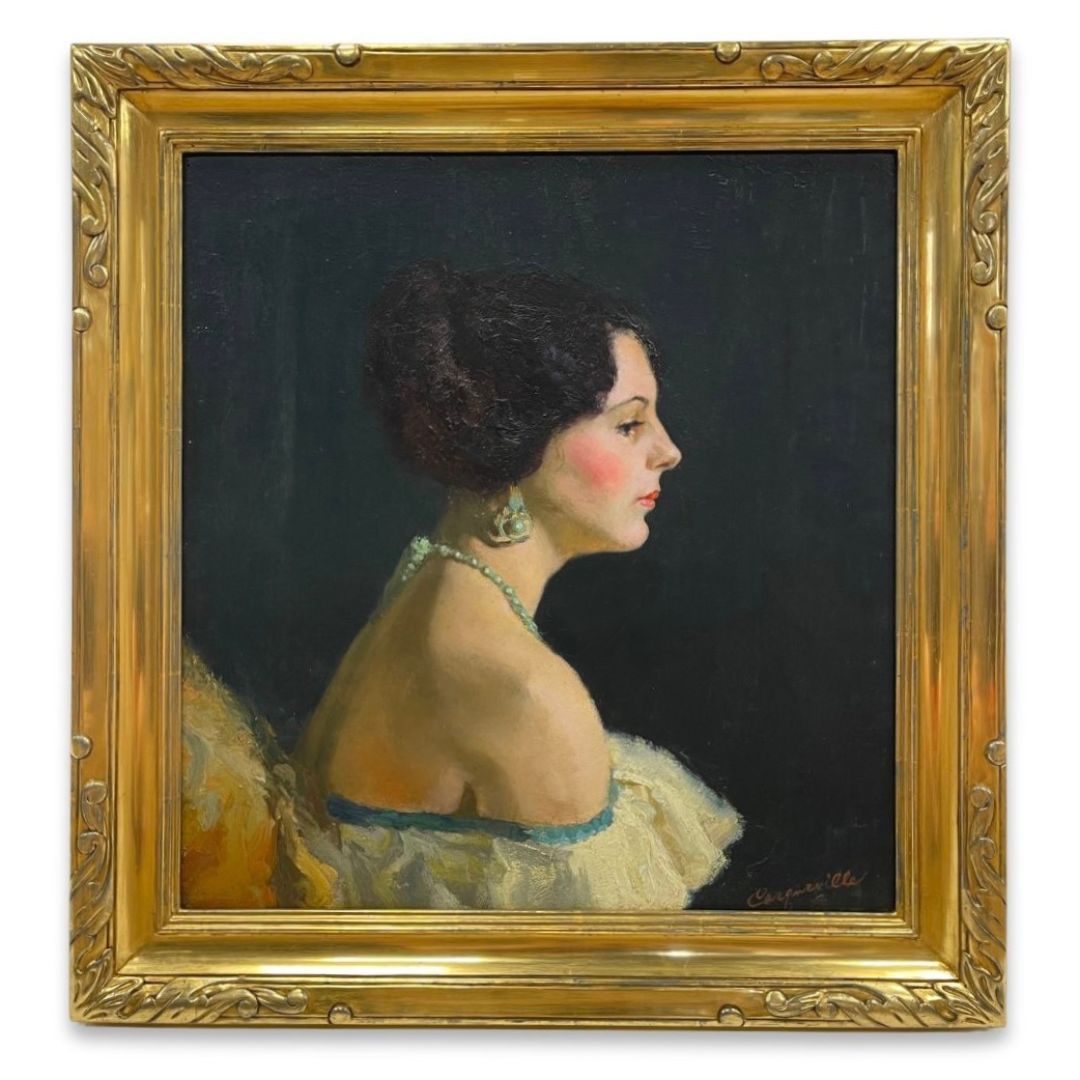
The Finished Frame
With the gilded frame complete, the portrait was assembled into the frame. The lip of the frame was lined with volara, the painting was assembled into the profile with a fluted polypropylene backboard. Once assembled, a dustcover was installed on the back. D-rings were secured as the hanging hardware. This beautful, heirloom portrait is now on display with its carefully designed frame. The frame that will protect and display this portrait for generations to enjoy.
If you have questions or if you want to learn how to start a special project, please contact us at info@artifactservices.com

